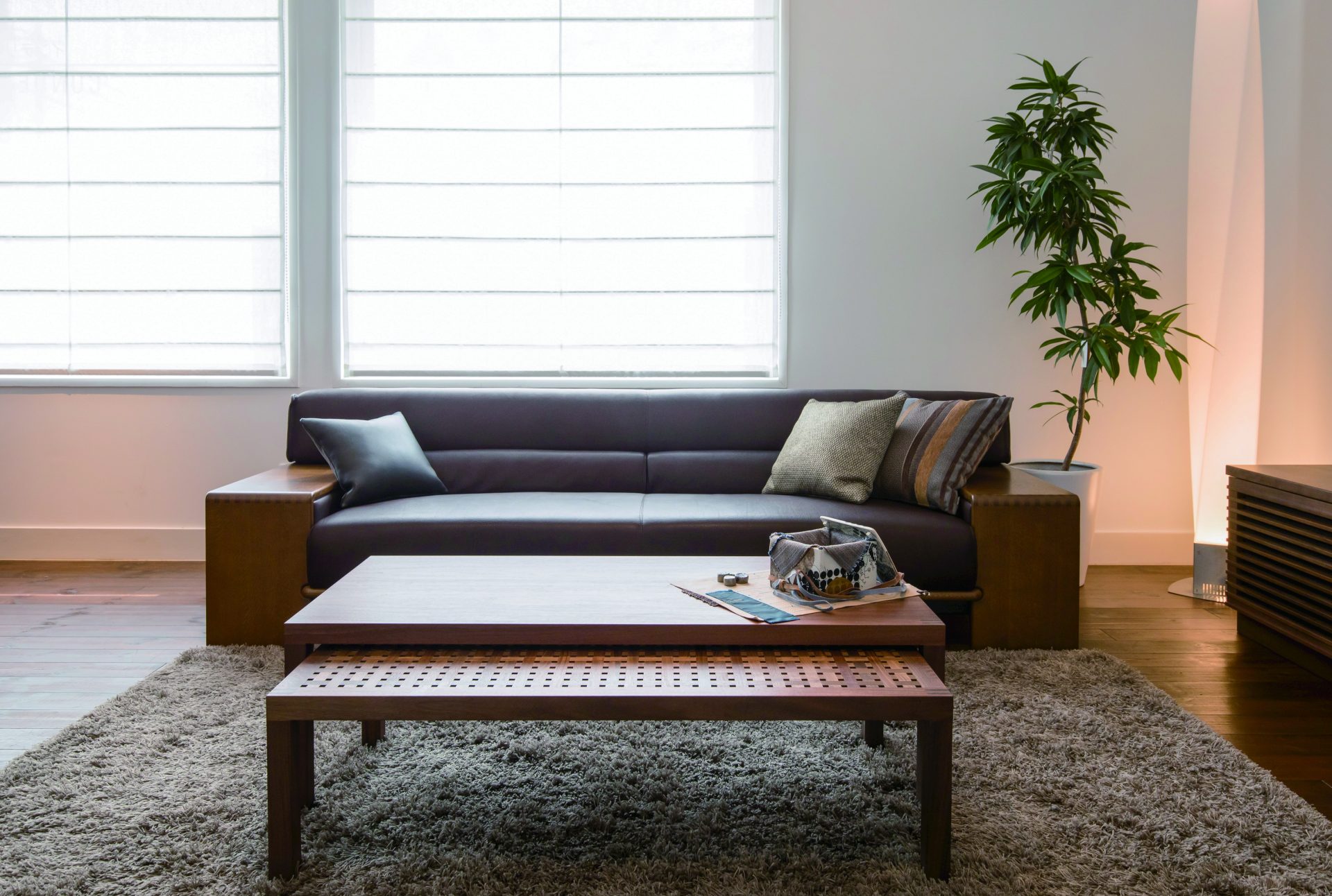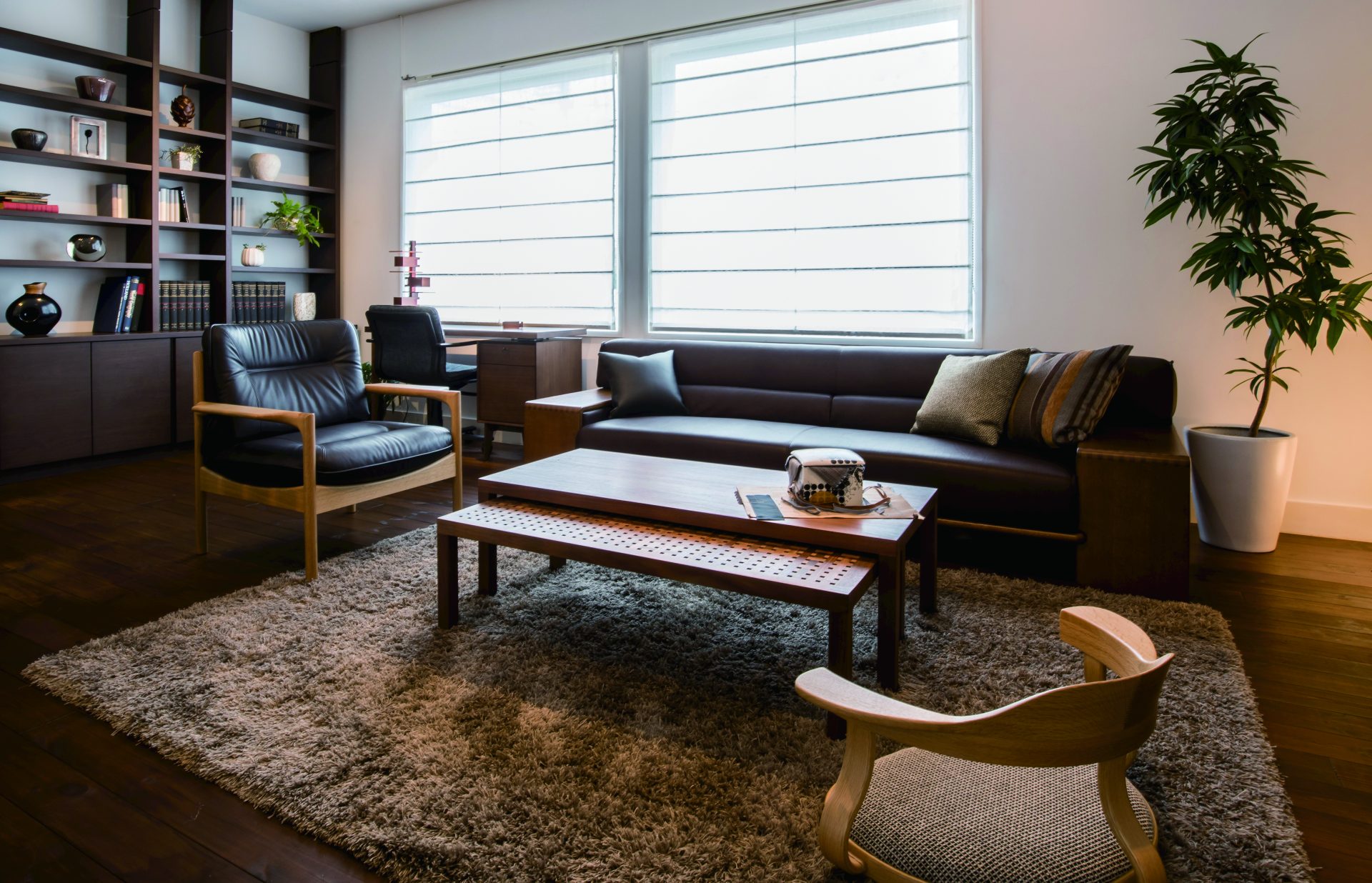We restore it but don’t make it all new
Our long-seller “BOLS” sofas often come back to us from around the country for restoration. The one in the above image was sent to us by a customer who fell in love with this sofa and purchased it several decades ago. Urethane foam cushions wrapped in cotton appeared from under the worn-out nu-buck upholstery. The cushions lost their resilience especially in the center part, and the color of the leather transfered. We are always glad to see worn-out sofas return because that means the users love them and want to keep using them further.

We intentionally leave memorable scars as they are
However, restoration could be somewhat challenging even for our craftspeople. In fact, it’s a lot harder than making one from scratch. Craftspeople must be able to determine the details of restoration. They must decide to what extent they need to restore returned furniture. it’s not as simple as making it look brand new. Scars and stains made on wooden parts over the years may tell stories. Well-used ambiances produce rich warmth in the living room. We strongly believe we have to keep such unique histories alive in the returned furniture. For this BOLS sofa, our craftspeople decided to use the existing frame, apply a new coating on the architrave and arm rests, change the old cushions to a molded urethane foam which is more resilient, and upholster the new cushions with new leather. The deliberate restoration should prolong its life for another good bit.

Not for profit but for hearing customers saying “Welcome back!”
To tell the truth, there’s not much profit in restoration work. Every piece of furniture has its own condition made in long-term use. We must exam each and every one of them, remove the upholstery and coating carefully, and decide on how it needs to be restored. It takes time and is unable to be streamlined because no two conditions are the same, but we believe this is something we have to do. We want to utilize limited wood resources for as long as possible, and to show our gratitude towards our customers. Any hard work is worth it when we think of those who are looking forward to having their restored furniture back. I love it to hear our customers say “Welcome back!” to restored furniture when we deliver it to their home.

Shungo Ijima
He is travelling around the world. His passion is to explain Japan to the world, from the unique viewpoint accumulated through his career: overseas posting, MBA holder, former official of the Ministry of Finance.

